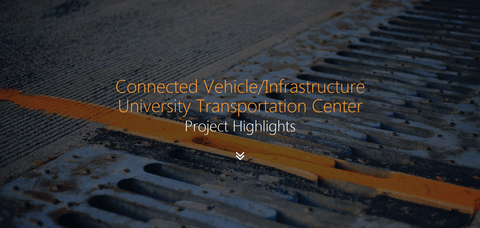


CVI-UTC Researchers participated in the 2016 USA Science & Engineering Festival on April 16 & 17 in Washington, D.C. This free event drew an amazing crowd of over 350,000 people and packed the Washington Convention Center with over 3,000 hands-on activities and more than 50 stage shows for attendees!
Learn more about this event on their Facebook page.
The final report for Field Testing of Eco-Speed Control Using V2I Communication, submitted by Dr. Hesham Rakha, Hao Chen, Mohammed Almannaa, Dr. Raj Kishore Kamalanathsharma, Ihab El-Shawarby, and Amara Loulizi, has been released.
This research focused on the development of an Eco-Cooperative Adaptive Cruise Control (EcoCACC) System and addressed the implementation issues associated with applying it in the field. The Eco-CACC system computes and recommends a fuel-efficient speed based on Signal Phasing and Timing (SPaT) data received from the traffic signal controller via vehicle-to-infrastructure (V2I) communication. The computed speed profile can either be broadcast as an audio alert to the driver to manually control the vehicle, or, implemented in an automated vehicle (AV) to automatically control the vehicle. The proposed system addresses all possible scenarios, algorithmically, that a driver may encounter when approaching a signalized intersection. Additionally, from an implementation standpoint, the research addresses the challenges associated with communication latency, data errors, real-time computation, and ride smoothness. The system was tested on the Virginia Smart Road Connected Vehicle Test Bed in Blacksburg, VA. Four scenarios were tested for each participant: a base driving scenario, where no speed profile data was communicated; a scenario in which the driver was provided with a “time to red light” countdown; a manual Eco-CACC scenario where the driver was instructed to follow a recommended speed profile given via audio alert; and finally, an automated Eco-CACC scenario where the AV system controlled the vehicle’s longitudinal motion. The field test included 32 participants, and each participant completed 64 trips to pass through a signalized intersection for different combinations of signal timing and road grades. The analyzed results demonstrate the benefits of the Eco-CACC system in assisting vehicles to drive smoothly in the vicinity of intersections, thereby reducing fuel consumption levels and travel times. Compared to an uninformed baseline drive, the longitudinally automated Eco-CACC system controlled vehicle drive resulted in savings in fuel consumption levels and travel times of approximately 37.8% and 9.3%, respectively.
Click here to learn more about this project and read the final report.
 Interested in learning about CVI-UTC research projects? Navigate to our Awarded Projects page to read highlights from each research project and more!
Interested in learning about CVI-UTC research projects? Navigate to our Awarded Projects page to read highlights from each research project and more!